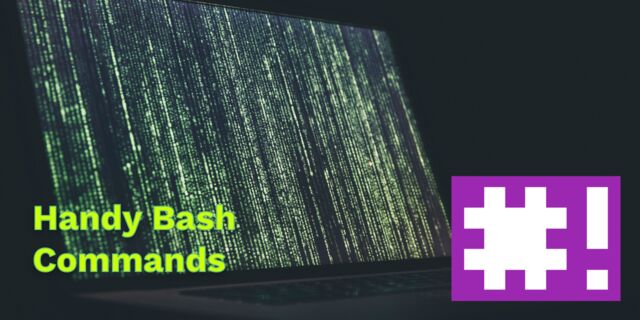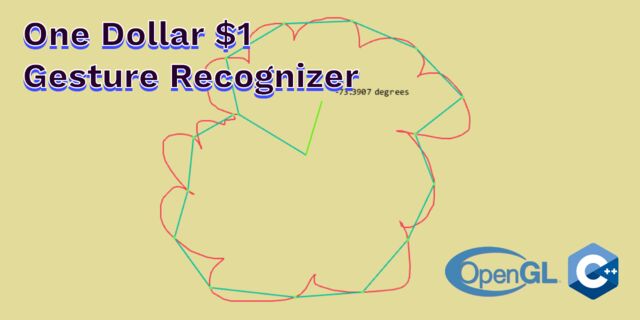Some notes on OpenGL
FBO + Render-To-Texture + Depth testing
When you use and FBO to render the scene into a texture and then
another pass to apply some effect, you need to make sure that you're
not using the same depth values (gl_Position.z) because else the second
pass will not be rendered when depth testing is enabled. A simple fix for
this (but this might be a bit heavy if you do it do often) is turning on/off
depth testing using glEnable(GL_DEPTH_TEST) and glDisable(GL_DEPTH_TEST)
Texture formats
When you use glTexImage2D() you specify the internalFormat, format
and the type of your texture data. Choosing the correct values is important
when you're streaming data to the gpu as the driver might want to rearrange
the pixel data you provide which you really don't want.
internalFormat:
number of color components in the texture (GL_R, GL_RG, GL_RGB, GL_RGBA).format:
format of the pixel data triggers swizzling! (GL_BGRA, GL_YCBCR_422_APPLE)type:
data type of the pixel data (GL_UNSIGNED_BYTE, GL_UNSIGNED_SHORT)
Apple advices to use these formats and types
Format With type -------------------------------------------------------- GL_BGRA | GL_UNSIGNED_INT_8_8_8_8_REV GL_BGRA | GL_UNSIGNED_SHORT_1_5_5_5_REV GL_YCBCR_422_APPLE | GL_UNSIGNED_SHORT_8_8_REV_APPLE --------------------------------------------------------
YUV420P (I420p) shader
Snippet to remember for video decoding on gpu
static const char* DEBUG_VS = "" "#version 150\n" "const vec2 verts[4] = vec2[] (" " vec2(-1.0, 1.0), " " vec2(-1.0, -1.0), " " vec2(1.0, 1.0), " " vec2(1.0, -1.0) " ");" "const vec2 texcoords[4] = vec2[] (" " vec2(0.0, 0.0), " " vec2(0.0, 1.0), " " vec2(1.0, 0.0), " " vec2(1.0, 1.0) " ");" "out vec2 v_texcoord;" "void main() {" " gl_Position = vec4(verts[gl_VertexID], 0.0, 1.0);" " v_texcoord = texcoords[gl_VertexID];" "}" ; static const char* DEBUG_FS = "" "#version 150\n" "uniform sampler2D y_tex;" "uniform sampler2D u_tex;" "uniform sampler2D v_tex;" "in vec2 v_texcoord;" "out vec4 fragcolor;" "const vec3 R_cf = vec3(1.164383, 0.000000, 1.596027);" "const vec3 G_cf = vec3(1.164383, -0.391762, -0.812968);" "const vec3 B_cf = vec3(1.164383, 2.017232, 0.000000);" "const vec3 offset = vec3(-0.0625, -0.5, -0.5);" "void main() {" " float y = texture(y_tex, v_texcoord).r;" " float u = texture(u_tex, v_texcoord).r;" " float v = texture(v_tex, v_texcoord).r;" " vec3 yuv = vec3(y,u,v);" " yuv += offset;" " fragcolor = vec4(0.0, 0.0, 0.0, 1.0);" " fragcolor.r = dot(yuv, R_cf);" " fragcolor.g = dot(yuv, G_cf);" " fragcolor.b = dot(yuv, B_cf);" "}";
FBOs with different sized texture attachments
With the framebuffer feature it's possible to render offscreen into what is called color attachments. Color attachments can be textures or render buffers for example.
Although the specification states that you can use different sized
color attachments, which is true, you need to be aware that the
effective FBO size, is the size of the intersection of the attachments
dimensions... aka the smallest dimension. This is important when you
e.g. need to use glBlitFramebuffer as it will only blit the smallest
area.
See this comment "Notice that there is no restriction based on size. The effective size of the FBO is the intersection of all of the sizes of the bound images (ie: the smallest in each dimension)." on the openGL wiki
Attribute less rendering
By using the build in gl_VertexID variable in your vertex
shader and defining a array for vertex positions and texture
coordinates you can draw basic triangle strips withouth using
a VBO. You still need to create a vertex array object but you
don't need to set any attributes or pointers. See the shader
below which uses this attribute less rendering technique.
static const char* FULLSCREEN_VS = "" "#version 150\n" "const vec2 verts[4] = vec2[] (" " vec2(-1.0, 1.0), " " vec2(-1.0, -1.0), " " vec2(1.0, 1.0), " " vec2(1.0, -1.0)" ");" "const vec2 tex[4] = vec2[] (" " vec2(0.0, 1.0), " " vec2(0.0, 0.0), " " vec2(1.0, 1.0), " " vec2(1.0, 0.0)" ");" "out vec2 v_tex; " "void main() {" " gl_Position = vec4(verts[gl_VertexID], 0.0, 1.0);" " v_tex = tex[gl_VertexID];" "}" ""; static const char* TEX_FS = "" "#version 150\n" "uniform sampler2D u_tex;" "in vec2 v_tex;" "out vec4 fragcolor;" "void main() {" " vec4 tc = texture(u_tex, v_tex);" " fragcolor.rgb = tc.rgb;" " fragcolor.a = 1.0f;" "}" "";
By using the above shader and by taking care of your model matrix in a smart way you can draw textures using an orthographic matrix in such a way that the texture can be drawn at any location, size and rotation. In the following code I'm setting up a ortho matrix. See the updated attribute less shader below too.
bool Graphics::setup() // tex_pm is a Mat4 and is the projection matrix glGenVertexArrays(1, &tex_vao); tex_pm.ortho(0.0f, settings.win_w, settings.win_h, 0.0f, 0.0f, 100.0f); tex_vs = rx_create_shader(GL_VERTEX_SHADER, TEX_VS); tex_fs = rx_create_shader(GL_FRAGMENT_SHADER, TEX_FS); tex_prog = rx_create_program(tex_vs, tex_fs); glLinkProgram(tex_prog); rx_print_shader_link_info(tex_prog); glUseProgram(tex_prog); glUniformMatrix4fv(glGetUniformLocation(tex_prog, "u_pm"), 1, GL_FALSE, tex_pm.ptr()); return true } void Graphics::drawTexture(GLuint tex, float x, float y, float w, float h) { glUseProgram(tex_prog); glActiveTexture(GL_TEXTURE0); glBindVertexArray(tex_vao); float hw = w * 0.5; float hh = h * 0.5; // use the following model matrix to draw the texture at the given (x,y) and (width,height) // here I also rotate (around the center) tex_mm.identity(); tex_mm.translate(x + hw, y + hh, 0.0f); tex_mm.rotate(45.0f * DEG_TO_RAD, 0.0f, 0.0f, 1.0f); tex_mm.scale(hw, hh, 1.0f); glUniformMatrix4fv(glGetUniformLocation(tex_prog, "u_mm"), 1, GL_FALSE, tex_mm.ptr()); glPolygonMode(GL_FRONT_AND_BACK, GL_LINE); glDrawArrays(GL_TRIANGLE_STRIP, 0, 4); }
And the (updated) shader:
static const char* TEX_VS = "" "#version 150\n" "uniform mat4 u_pm;" "uniform mat4 u_mm;" "const vec2 verts[4] = vec2[] (" " vec2(-1.0, 1.0), " " vec2(-1.0, -1.0), " " vec2(1.0, 1.0), " " vec2(1.0, -1.0)" ");" "const vec2 tex[4] = vec2[] (" " vec2(0.0, 1.0), " " vec2(0.0, 0.0), " " vec2(1.0, 1.0), " " vec2(1.0, 0.0)" ");" "out vec2 v_tex; " "void main() {" " vec4 vert = vec4(verts[gl_VertexID], 0.0, 1.0);" " gl_Position = vert; " " gl_Position = u_pm * vert;" " gl_Position = u_pm * u_mm * vert;" " v_tex = tex[gl_VertexID];" "}" ""; static const char* TEX_FS = "" "#version 150\n" "in vec2 v_tex;" "out vec4 fragcolor;" "void main() {" " fragcolor = vec4(1.0, 0.0, 0.0, 1.0);" "}" "";

 NAT Types
NAT Types
 Building Cabinets
Building Cabinets
 Compiling GStreamer from source on Windows
Compiling GStreamer from source on Windows
 Debugging CMake Issues
Debugging CMake Issues
 Dual Boot Arch Linux and Windows 10
Dual Boot Arch Linux and Windows 10
 Mindset Updated Edition, Carol S. Dweck (Book Notes)
Mindset Updated Edition, Carol S. Dweck (Book Notes)
 How to setup a self-hosted Unifi NVR with Arch Linux
How to setup a self-hosted Unifi NVR with Arch Linux
 Blender 2.8 How to use Transparent Textures
Blender 2.8 How to use Transparent Textures
 Compiling FFmpeg with X264 on Windows 10 using MSVC
Compiling FFmpeg with X264 on Windows 10 using MSVC
 Blender 2.8 OpenGL Buffer Exporter
Blender 2.8 OpenGL Buffer Exporter
 Blender 2.8 Baking lightmaps
Blender 2.8 Baking lightmaps
 Blender 2.8 Tips and Tricks
Blender 2.8 Tips and Tricks
 Setting up a Bluetooth Headset on Arch Linux
Setting up a Bluetooth Headset on Arch Linux
 Compiling x264 on Windows with MSVC
Compiling x264 on Windows with MSVC
 C/C++ Snippets
C/C++ Snippets
 Reading Chunks from a Buffer
Reading Chunks from a Buffer
 Handy Bash Commands
Handy Bash Commands
 Building a zero copy parser
Building a zero copy parser
 Kalman Filter
Kalman Filter
 Saving pixel data using libpng
Saving pixel data using libpng
 Compile Apache, PHP and MySQL on Mac 10.10
Compile Apache, PHP and MySQL on Mac 10.10
 Fast Pixel Transfers with Pixel Buffer Objects
Fast Pixel Transfers with Pixel Buffer Objects
 High Resolution Timer function in C/C++
High Resolution Timer function in C/C++
 Rendering text with Pango, Cairo and Freetype
Rendering text with Pango, Cairo and Freetype
 Fast OpenGL blur shader
Fast OpenGL blur shader
 Spherical Environment Mapping with OpenGL
Spherical Environment Mapping with OpenGL
 Using OpenSSL with memory BIOs
Using OpenSSL with memory BIOs
 Attributeless Vertex Shader with OpenGL
Attributeless Vertex Shader with OpenGL
 Circular Image Selector
Circular Image Selector
 Decoding H264 and YUV420P playback
Decoding H264 and YUV420P playback
 Fast Fourier Transform
Fast Fourier Transform
 OpenGL Rim Shader
OpenGL Rim Shader
 Rendering The Depth Buffer
Rendering The Depth Buffer
 Delaunay Triangulation
Delaunay Triangulation
 RapidXML
RapidXML
 Git Snippets
Git Snippets
 Basic Shading With OpenGL
Basic Shading With OpenGL
 Open Source Libraries For Creative Coding
Open Source Libraries For Creative Coding
 Bouncing particle effect
Bouncing particle effect
 OpenGL Instanced Rendering
OpenGL Instanced Rendering
 Mapping a texture on a disc
Mapping a texture on a disc
 Download HTML page using CURL
Download HTML page using CURL
 Height Field Simulation on GPU
Height Field Simulation on GPU
 OpenCV
OpenCV
 Some notes on OpenGL
Some notes on OpenGL
 Math
Math
 Gists to remember
Gists to remember
 Reverse SSH
Reverse SSH
 Working Set
Working Set
 Consumer + Producer model with libuv
Consumer + Producer model with libuv
 Parsing binary data
Parsing binary data
 C++ file operation snippets
C++ file operation snippets
 Importance of blur with image gradients
Importance of blur with image gradients
 Real-time oil painting with openGL
Real-time oil painting with openGL
 x264 encoder
x264 encoder
 Generative helix with openGL
Generative helix with openGL
 Mini test with vector field
Mini test with vector field
 Protractor gesture recognizer
Protractor gesture recognizer
 Hair simulation
Hair simulation
 Some glitch screenshots
Some glitch screenshots
 Working on video installation
Working on video installation
 Generative meshes
Generative meshes
 Converting video/audio using avconv
Converting video/audio using avconv
 Auto start terminal app on mac
Auto start terminal app on mac
 Export blender object to simple file format
Export blender object to simple file format